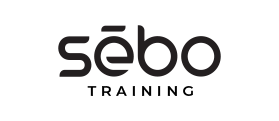Last Updated on September 27, 2022
Monthly Schedule
Each month the Fulfillment Director will ask for the number of hours you will be working that month.
When planning your hours, if you think you’ll be in between 10:00 and 10:15, ALWAYS say 10:15. Its better to be early than late. The same with clocking out, if you are planning on leaving between 5:00 and 5:30, ALWAYS put 5:00. It not good to have your schedule say you are here and you are nowhere to be found.
Always let our office manager & the Fulfillment Director know and update your calendar if your schedule changes.
Examples:
- A test comes up and you are going to be late: Call or text Rachel and your supervisor. Update your Google calendar with the time you expect to be arrive.
- You are sick or can’t make in to work today: Call or text Rachel and your supervisor. Mark the day off on your Google calendar. Mark the vacation day in Liquid Planner.
Google Calendar
Calendars and time management are VERY important parts of working at Sebo. We expect everyone to have their Google Calendar set up to mirror your monthly schedule hours.
Required calendar items:
- In time
- Out time
- Lunch time
- Days off
Highly suggested items:
- Internal employee meetings (ie Fulfillment training time)
- External client meetings
- Phone calls
- Work, no interruption time
- Open time
Reserving Rooms for Meetings on Google Calendar
At the Sebo office we have several rooms available for meetings and other occasions. These meeting rooms are available to all Sebo employees and are used on a first come, first serve reservation basis. We ask that all employees wishing to use the rooms, schedule them by reserving them through Google Calendar. To the right is a video to show you how to add the meeting rooms to your Google Calendar interface, and how to reserve a room for a meeting. For questions, please visit with the Tech Director or HR manager or your immediate supervisor.
Things to remember and respect about others calendars:
- Try to avoid just popping over to someones desk to ask questions. Set up a time with them to review questions. If it happens often, set up a recurring meeting to resolve questions.
Everyone has 24 hours in a day. Being efficient and planning out your day helps you get more done. We want you to use your Google Calendar as an accurate representation of what your day is looking like. We want to know when you are available to talk, when you are tied up in a meeting, and when you won’t be at the office.
Everyone can make the calendar work for them. Feel free to adjust how it works to meet your needs. Some key principles:
Set Recurring Meetings
- Each week, you likely need to spend time talking to a few different people at Sebo. Coordinate those conversations, and set them up as recurring calendar items
- Do you know what days you will be here long enough to take a lunch? Set up lunches as recurring calendar items
- We have a weekly company meeting. Get that on your calendar as a recurring item!
Schedule Email Times
- If you allow it, you could likely check and recheck and recheck emails and address issues all day
- Don’t handle emails randomly. Let’s say that reading and addressing emails typically takes you 7 hours per week. As an example, you could schedule 30 minutes on your calendar 3 times a day. Schedule a time to check your emails right after your morning planning session. Schedule another time to check your emails right before lunch. Schedule a time to check emails 1 hour before you go home for the day. Once you have established a solid email pattern, don’t check your emails when it’s not on your calendar!
Schedule in Buffer Times
- If you are meeting with a client, schedule time to prep for the meeting
- If you are traveling to the client, schedule driving time
- Once you meet with the client, schedule time to add commitments or tasks to LiquidPlanner
- Schedule in time to think and to plan
Avoid Duplicate Items
- You can’t be in 2 places at once, so your calendar shouldn’t show 2 things at the same time
- Bruce works one day a week from home. His calendar shows that day and it’s blocked out (we’ve just listed it as an all day event before, but then his calendar looks empty so that didn’t work so well :-). However, during Bruce’s planning session for those days, he deletes the Works from Home repeating event, and then schedules out his hourly plan for the day.
Schedule in Personal Times
- This one is optional, but it’s a best practice to not use multiple calendars. For example, Bruce includes his exercise time, his work time, and even his weekly Family Home Evening time on his calendar.
- You can even see when Bruce is going to eat Breakfast any weekday!
Schedule on Calendar Days Off
- Make sure that if you are going to take time off in a month, that you mark that time off in your Google Calendar. This is essential for our task management processes and also helps supervisors know how to plan work or fulfillment team to estimate our task hour need. Please mark time off (if it is vacation or extended time, more than one day) ideally the month prior. If not, mark it as soon as you know you need the time off and let Jonny (for LiquidPlanner data) and your immediate supervisor (if applicable) know.
